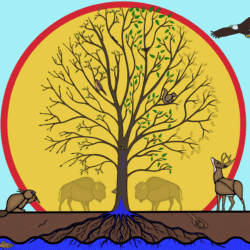John Tusa, the author of On Board, has a breadth and depth of arts board experience on both sides of the Atlantic that would be hard to match. What he gleaned from these experiences fills the pages of this detailed, honest, mostly modest, wise, and fascinating book.
On Board: The Insider’s Guide to Surviving Life in the Boardroom, by John Tusa. Bloomsbury; 2020; 240 pages; ISBN 9781472975997.
One of COVID-19’s unanticipated impacts on the arts community (in addition to almost everything else about how artists and arts organizations do their work) is that it has opened a wide and vigorous debate about boards. This discussion, rooted in questions about the board’s role and dissatisfactions with how many of those governing bodies function, is not new but has gotten more urgent and pervasive over the past year.
Perhaps it’s because some boards weren’t prepared to support the quick, bold changes and higher level of creative risk-taking required by the pandemic; perhaps it’s because the pandemic shone a spotlight on existing weaknesses in trust and collaboration between board and staff, and compounded confusion about the meaning of governance; perhaps it’s because of a society-wide pushback against hierarchical structure and existing authority, and the failure by many arts boards to engage members who are Indigenous, Black, or people of colour.
In any case, Yvette Nolan’s widely read and discussed September 2020 blogpost, “Governance Structures for Theatres, by Theatres: What I Wish Existed,” shows how live this issue is. Published by Mass Culture, as part of its Future of Arts Work project, the post questions the model, structure, and role of arts boards.
Elsewhere, the Ontario Nonprofit Network’s Reimagining Governance project, which is trying to provoke a shift in how non-profit organizations talk about and fulfill governance, seems to be catching on. As well, the Vancouver-based Pacific Legal Education and Outreach Society (PLEO) has instituted a series of packed panel discussions, responding to that community’s tumultuous response to decisions and actions taken by some arts boards. Attendance and attention to the Toronto Arts Foundation’s webinar series Guidance for Arts Boards Confronting a Pandemic has been expanding. And there’s much more happening in this realm.
John Tusa, author of On Board: The Insider’s Guide to Surviving Life in the Boardroom, has a breadth and depth of arts board experience on both sides of the Atlantic that would be hard to match, and is able to identify and untangle many structural (and behavioural!) board problems – offering hard-won insights and solutions from more than 30 years on both sides of the board table.
Tusa has been a senior cultural executive (managing director of BBC World Service and the Barbican Centre) and is a prolific author on art, artists, and culture. His first foray into board work was an invitation in 1988 to become a trustee of the National Portrait Gallery, where virtually all his colleagues’ names were preceded by the title “Sir.” His next appointment was to the board of American Public Radio, based in Minneapolis/St Paul; and then on to the English National Opera, the British Museum, Wigmore Hall, the University of the Arts London, the Clore Leadership Programme in its start-up phase, and the European Union Youth Orchestra. Along the way, he had to turn down the chairmanship of the Victoria and Albert Museum: too busy.
Lest we assume that Tusa’s was a life of nonstop champagne receptions and glamorous “away days,” we should remember his book’s subtitle: The Insider’s Guide to Surviving Life in the Boardroom. Like anyone who’s found themselves on many boards over many years, he encountered complex challenges, personality clashes, mismatched talents, and board chairs, board members, and managing and artistic directors acting badly. Through the years, he had to work hard to wrestle these organizations into the modern world, help them thrive, and in some cases keep them afloat.
Besides offering interesting observations on the differences between how American and British trustees see their role, [Tusa] supplements a range of fascinating stories with a cornucopia of clear and thoughtful lessons learned.
Jini Stolk
What he gleaned from these experiences fills the pages of this detailed, honest, mostly modest, wise, and fascinating book. Besides offering interesting observations on the differences between how American and British trustees see their role, he supplements a range of fascinating stories with a cornucopia of clear and thoughtful lessons learned.
Partly because he interviewed the major players – artistic and management, board, key stakeholders – at each of the organizations, and because he openly shares both criticism and self-criticism, his insights can be usefully embraced by both committed board members and managing and artistic directors wrestling with how to get the support they need out of a structure they may find constraining.
Those insights fall into a few clear themes: The importance of having a strong board chair, leading and guiding the board. The necessity of building a trusting and honest working relationship between the managing and artistic leadership and the chair, chairs of prominent committees, and other trustees. The necessity of understanding the institution and its needs when replacing artistic or executive leaders, the perils of making a wrong hire, and the huge rewards of picking someone right for the job. The need for a board to understand and fulfill its governance responsibilities and to create oversight and decision-making structures that shore up that work and deter “drift.” The clear division of responsibilities between board and senior staff members. The complexity of conceiving and executing a major capital project (the near hopeless decrepitude of the English National Opera’s house rivals that of Henry Irving’s Lyceum Theatre in Joseph O’Connor’s wonderful novel Shadowplay), and the transformational potential of one done well.
The popular understanding of a trustee’s role evolved and matured over the time frame the book deals with, from the 1980s to just before the pandemic. When Tusa joined the National Portrait Gallery, its trustees were learned scholars and prominent collectors, with little awareness of or interest in the role of a museum in society. The British Arts Council in his early stories was directly involved in the inner workings, governance, and management decisions of the major institutions they supported and was perfectly willing to withhold funding based on its members’ approval or not of those decisions.
“Modernization” during the years covered in this book included the growth of private sector fundraising and a growing awareness that earned revenues required deep connections with audiences and community. In the early years, women were only lightly represented on these major institution boards; their voices and leadership grew over the years. Artists’ representation and participation took longer. Awareness of the importance of a diversity of voices and experiences around the board table came with practice, as did real community input and partnership.
Tusa himself evolved along the way, and his management experience and time in the United States gave him insight into how boards function when they work well. He credits Ken Dayton, chair of the board of American Public Radio, as being a major mentor and the finest board chair he ever encountered – because of his personal kindness, modesty, and strong principles; exceptional directness and focus on mission; expectation of professionalism, commitment, and “good board manners”; insistence on openness and honesty; and belief in the clear separation of powers between CEO and board.
It would be possible to find the most useful lessons in On Board by simply reading the page of concise reflections Tusa includes at the end of every chapter. But that would be missing the crux of the experiences that made him an exemplary board leader and thinker. Admittedly, the stories in On Board are not as frothy, dishy, or delightful as those in Thomas Hoving’s Making the Mummies Dance – his unforgettable memoir of 10 years as director of New York’s Metropolitan Museum of Art. That book provides hair-raising tales of “collecting” skullduggery, fundraising manipulation and scheming, and board members at the highest levels of wealth, power, and arrogance – hard-headed, unused and unwilling to accept mere staff as peers. But Hoving blew through the Met like a tropical storm, creating the first blockbuster exhibitions and throwing the fusty museum’s doors open to an enthusiastic public.
There’s no rule book, no easy route to becoming a good board member.
John Tusa
As Tusa says, there’s no rule book, no easy route to becoming a good board member. In the final chapters of On Board, he shares the beating heart of why he took on, again and again, the hard work and challenges of serving on an arts board. This, to me, is the core difference between his view of boards and Dambisa Moyo’s in How Boards Work: And How They Can Work Better in a Chaotic World – enthusiastically received but less inspiring and unconvincing in its confidence that market-based economies and large international corporations are playing a leading role in (re)solving complex environmental, technological, and social issues.
Tusa is talking about using your skills, time, talent, and life experiences to support and add value to an organization you care deeply about because it is doing good in the world. He exemplifies the values of continuous observation, practice, and learning. He sees the joy and privilege of public service, the personal satisfactions of deep investment in artists’ visions and creative processes, the lifelong friendships forged in fire – board work as both a responsibility and a privilege.
On Board was published in 2020 and was completed before issues of equity, representation, anti-harassment – always there, always troubling – exploded into public consciousness. He doesn’t mention BAME (the UK acronym for Black, Asian, and minority ethnic), although Clore Leadership, which he helped found, now has a rich set of courses, coaching, and “conversations” addressing existing gaps in diversity in cultural leadership.
Arts organizations and their boards, in Canada, the UK, and elsewhere, are undoubtedly changing, in good and necessary ways: in their understanding of governance as a shared practice, in their relationships to the communities they serve, in the values they embrace and exemplify.
Tusa’s book doesn’t speak directly to these changes, but it grounds board members, managers, and artists in the attitudes, relationships, and ways of working that successful change will require.
On Board is about the things that can’t be taught – but must be learned.


